The concept of using tail fins for automotive applications came to Harley Earl when he visited the Lockheed factory where the then-secret P-38 Lightning fighter plane was developed for WWII.General Motors supplied V-12 Allison engines to the military, which gave him access. He was amazed with its twin engine, twin fuselage configuration which included vertical stabilizer fins on the rearmost of the tails.When it was time to take on designing post-war cars, Earl remembered the P-38 and used those tail fins as a design element. He is correctly credited as being responsible for introducing them to the American automobile.
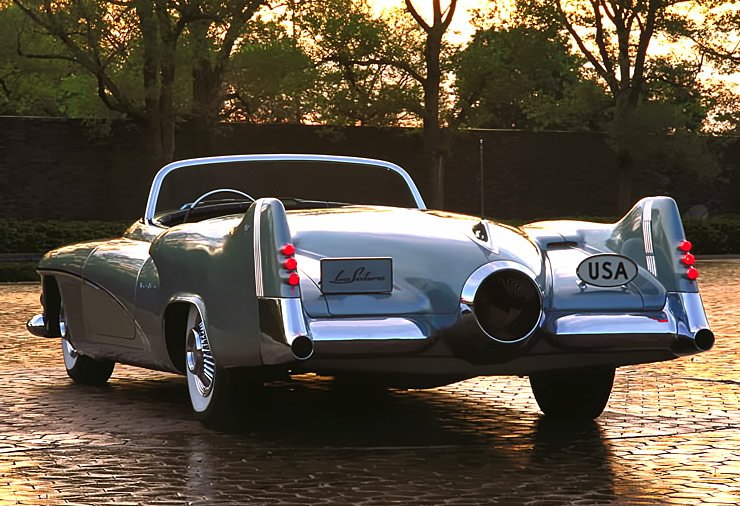
The Buick LeSabre experimental show car was an aluminum-bodied two-seater that borrowed its name from the F86 Sabre jet plane. With instructions from Harley Earl, the designers gave it a look of “alertness and speed.” It used enlarged fins (thinly shaped and without taillight at the top), which would make it onto the 1955 Cadillac Eldorado, albeit with a slightly revised “shark” shape
It started with small versions on the 1948 Cadillac. Tail fins added definition to the rear of the car, giving it a distinctive appearance, one that quickly would become a Cadillac styling mainstay for some 15 years. At the beginning, they were considered a novel styling design innovation, but nothing else.The tail fin is a functional feature on racing cars. The best known example may be Sir Malcolm Campbell’s “Bluebird” land speed record car, as seen at Daytona Beach, Florida, in March of 1935. It featured a large single rear wing added for aerodynamic stability.
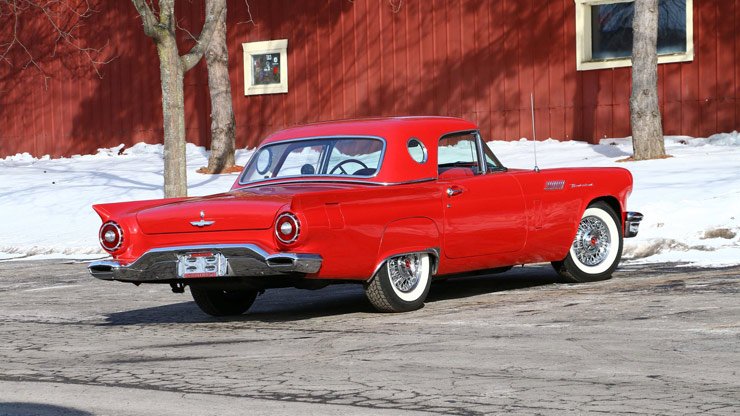
The Ford Motor Company became a part of the tail fin phenomenon with the Thunderbird that shows an example of modest “blade” tail fins that FoMoCo added to their line to keep up with the fashions of the day
From that first Cadillac, the use of tail fins were next applied to the General Motors concept car “LeSabre,” a Buick one-off that had aircraft influence in the body shape, especially in the rear with its extended twin tail fins. It was toured on the car show circuit in 1951 and foreshadowed things to come.
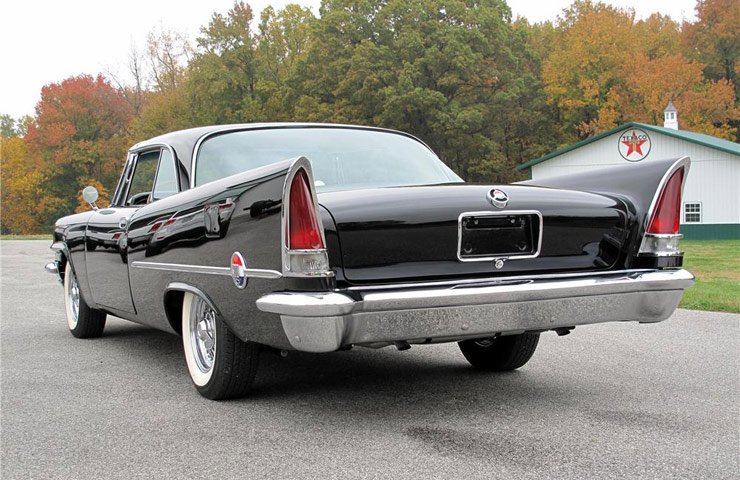
Long sweeping tail fins were the predominant feature on the line of 1957 Chryslers, like the high-performance 300C Letter Car. Virgil Exner provided large and dramatic versions starting this year and continuing through the 1961 model year run.
There were efforts put forth to make the public believe that tail fins were actually, and at typical highway speeds, fitted to the cars for function. In promoting the new-for-1956 line of “Forward Look” cars from their divisions, Chrysler used the advertising, “How is a Chrysler-built car similar to a jet fighter, a Gold Cup racing boat, and a big-time race car?” The reply, according to the Chrysler ad agency copywriters, was explained as follows: “The answer to this riddle lies in the silhouette — namely the wedge shape.”
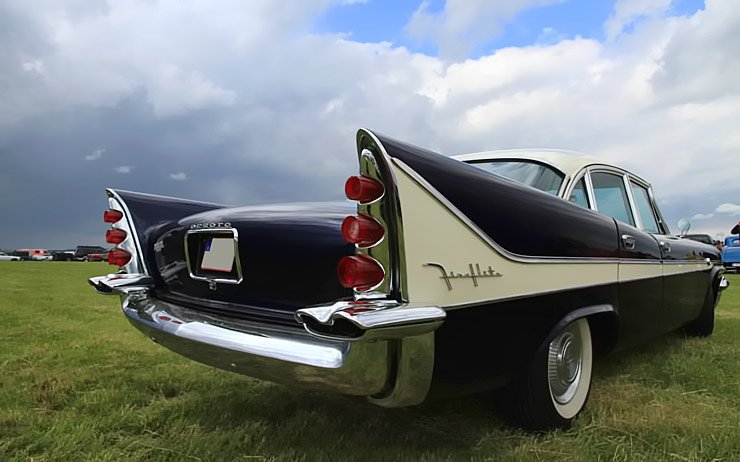
Stacked taillights on the 1958 DeSoto FireFlite show the division’s variation of their fin design. The manufacturers used every conceivable design trick to create a uniquely styled tail fin all their own.[/caption]
Directional stability is what these Virgil Max Exner-styled tail fin cars were said to offer as compared to conventional body shapes. In a report done by Chrysler in 1957 (relating to a special concept car called the Dart), the company offered statements from Exner. “Two aerodynamic effects are involved, which are pertinent to this discussion. One is the resistance of the air to the passage of the vehicle, known as aerodynamic drag. The other is the effect crosswinds have on stability of the vehicle’s movement — its ability to travel straight along an intended path. Since the dart — or wedge — shape was so common to airplanes and boats, it was familiar to the public.
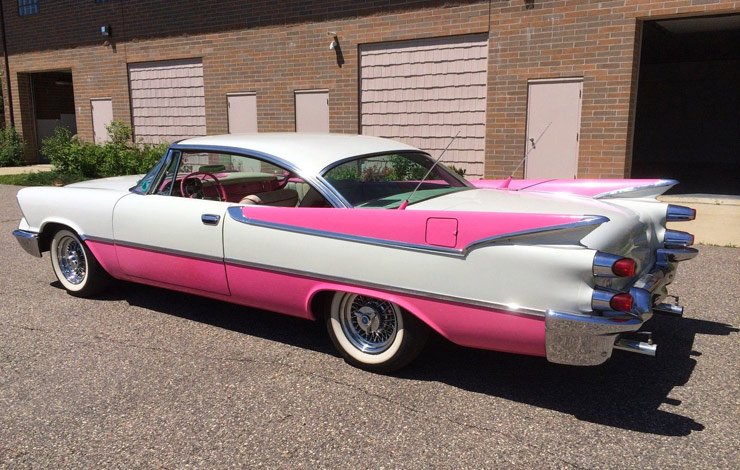
“Fish found fins first … But Dodge made them famous!” Those were the words used at this 1959 Chicago Auto Show display for 1959 Dodge, complete with Alyce Keller dressed as the mermaid. The fins were revised that year and Dodge made sure to draw attention to it.
“In Detroit, we knew, of course, that the teardrop has the least wind resistance. From the wind resistance standpoint, this shape is good. However, its stability in crosswinds is poor. The only way to stabilize the car without destroying its good wind resistance properties is to use fins. This results in a dart — or wedge — silhouette. This shape is used for aircraft, racing boats and cars and missiles for the same reasons. Our styling approach, then, was based on sound aerodynamic principles, which were verified by wind tunnel and actual performance tests. Good stability in crosswinds eliminates some of the need for steering corrections by the operator. This reduces driver fatigue, thus helping improve conditions for safer motoring.”
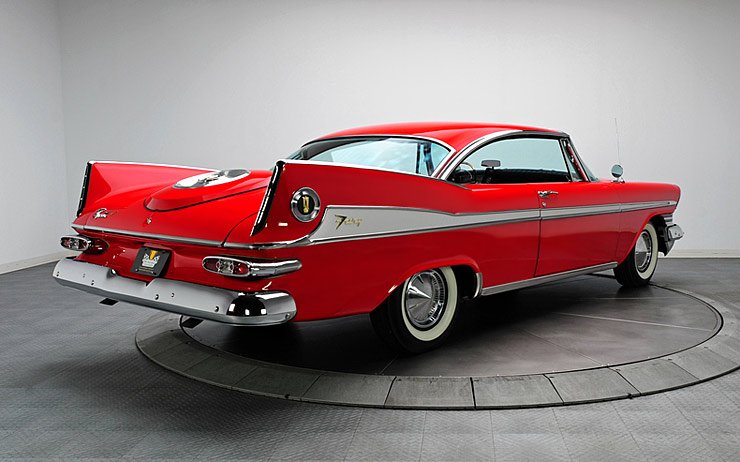
Plymouth was restyled for 1959 and continued with the tail fin theme, now slightly larger, canted forward and more pronounced. Shown here is the top-of-the-line Sport Fury model.
During the development of the 1957 models from Chrysler Corporation, there was testing done using a 3/8-scale plastic model of a DeSoto on a turntable and it was weighted down with 500 pounds of ballast. It had detachable fins of various sizes for comparison purposes. The model had moving wheels, a miniature cooling system (including an operational fan to replicate a 1:1 real car) and the undercarriage of the upcoming car was duplicated in minute scale detail to best replicate air travel around the car, front to rear, side to side and at sideways angles. “With the high upswept fins of our 1957 models,” said Exner, “tests showed that road-holding stability was improved by as much as 20 percent in strong crosswinds at normal highway speeds.”
Sales figures proved the buying public liked tail fins on Chrysler-built vehicles, as the automaker’s market share in 1957 rose from 15.9 percent to 19.5 percent, and with that came profits going from $6 million to $103 million.
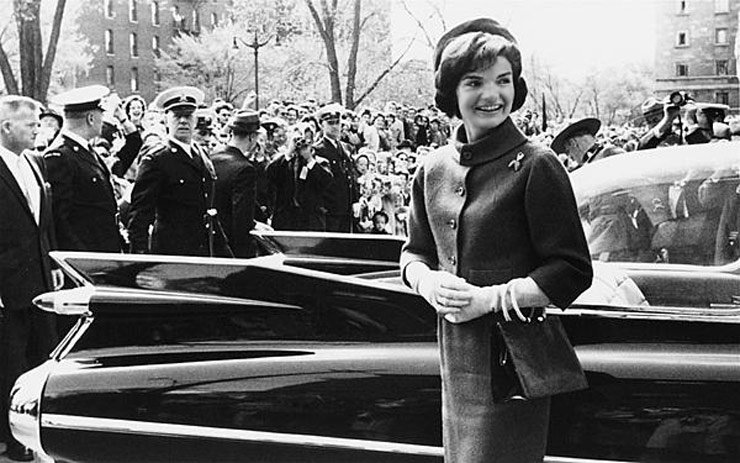
First Lady Jacqueline Kennedy looks glamorous standing next to the specially prepared presidential limousine, but some in the rest of the world, especially those with hostile attitudes towards the U.S., felt those big tail fins symbolized the arrogance of the era
The philosophy of excess was paying off for Exner. All good things must come to an end, they say, and it did happen within a few short years around the Chrysler division dealerships. The talk that tail fins actually did something functional on an automobile went silent after Chrysler discontinued their use in the early 1960s.
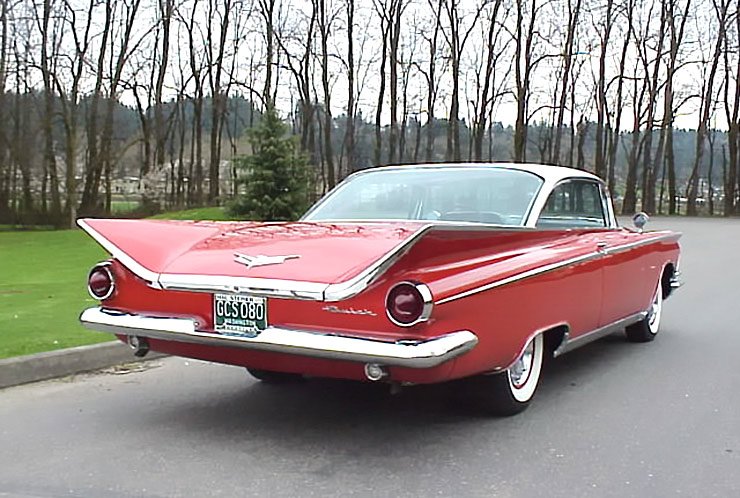
Stylists had to come up with as many deviations of the tail fin as possible as each new model year came up. Here’s the canted “Delta-wing” design with sloped rear deck from the 1959 Buick, which was proclaimed as “the right design for this day and age.”[/caption]
Perhaps the biggest reason fins went away is that automakers were changing body styling rapidly, some every year. When each new design is promoted as being the latest fashion, it’s hard to keep changing fin designs and making them larger and larger, or more unusual, without eventually making it ridiculous every fall. The most dramatic example commonly brought up is the 1959 Cadillac, where the huge surreal monsters set a record as they measured 42.4 inches from top of fin to the ground. GM designer Bill Mitchell, the man who succeeded Harley Earl as head of styling, once said that a car “should be exciting, and tail fins appeared to add excitement.”
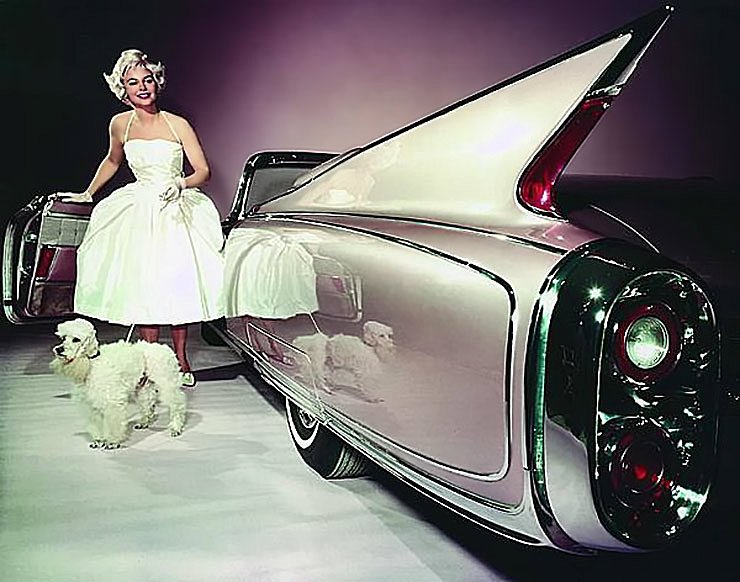
The tail fin styling for the 1960 Cadillac was somewhat subdued from the year prior, but they remained a major theme on the prestigious marque. Taillights were inserted into the trailing edges of the fin with a jewel-like appearance. Shown here is the ritzy Eldorado Biarritz convertible.
Towering, outlandish jumbo-sized fins, some positioned at bizarre angles, were a part of what made American cars of the period full of uniqueness and character. When styles and tastes change, Detroit has to adapt and keep pace. There was a point where they had to stop, or at least start to downplay the size of the tail fin. Eventually, fads like the tail fin are going to see their way out the door.
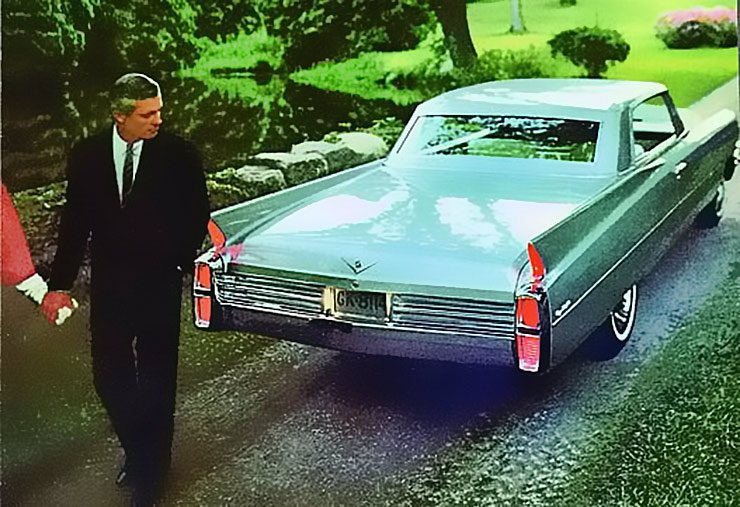
In time, the use of the tail fin design on cars was considered old fashioned and no longer in style. Cadillac had seriously toned them down as shown here on this 1963 Series 62 Coupe and remained on all models the following model year, then a new body style came in 1965 with bladed peaks on the rear quarter panels, no more fins.
The last year of the flashy 1950s saw nearly the entire American auto industry (save for Checker) involved in an orgy of all things to do with the aircraft-inspired tail fins. Not all were over-the-top, enormous and soaring in size, the others were smaller but always noticeable. Within a few model years, tail fins no longer were deemed “futuristic” and the road dragon, as viewed from the rear, was a thing of the past. The tail fin era was finally over.
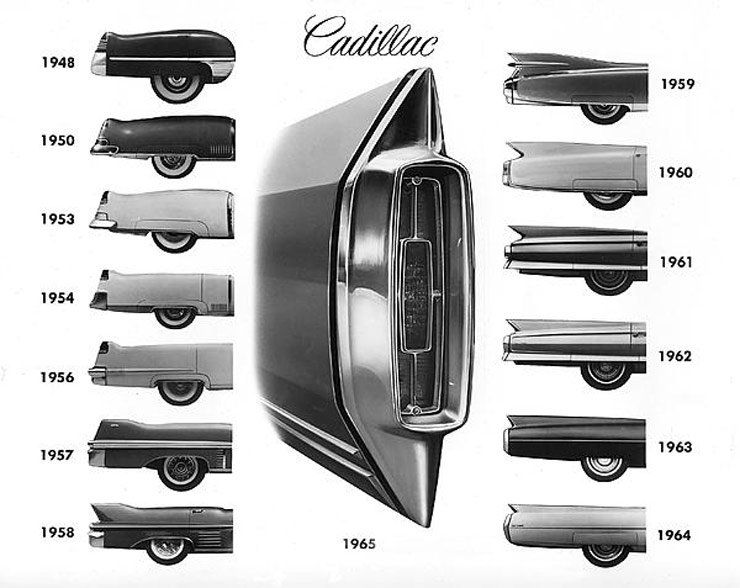
When the 1965 models appeared from Cadillac, the company issued this image showing the original 1948 tail fin and examples through the next 15 model years of how they were given a more tailored treatment to suit public tastes. The center photo shows the 1965 taillight treatment and how they got away from actual fins.








